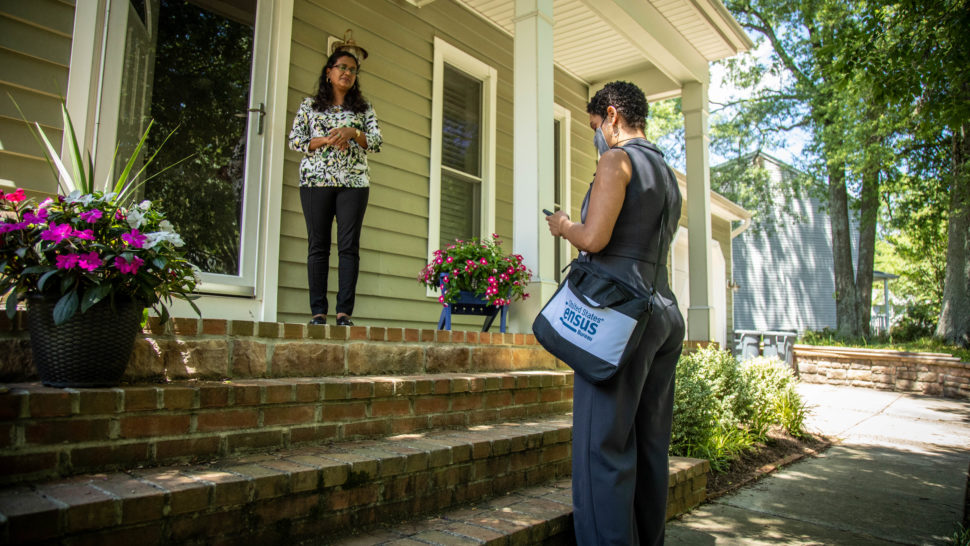How Communities Can Encourage Responses to the 2020 Census


Roughly 64% of U.S. households have responded to the 2020 census as of August 14, according to the Census Bureau. As the agency follows up with nonrespondents until September 30, homeowners associations can play an important role by allowing access to census takers to make sure all residents are counted.
Census takers started going door to door to collect responses in mid-July and were instructed to wear protective gear, practice social distancing, and follow public health guidelines to minimize the spread of COVID-19. Board members and community managers can encourage residents to fill out the 2020 census questionnaire online, by phone, or by mail to reduce the likelihood of in-person follow-up.
Associations must allow census takers access to their gated community or condominium to avoid fines. Field workers will have a valid identification badge and may carry bags and other items with the Census Bureau’s logo visible at all times. If no one is home, the census taker will leave information about how to respond to the census or may leave a paper questionnaire in a water-resistant bag.
Data collected in the 2020 census will drive decision-making, political representation, and economic development across the U.S. The results give a detailed statistical view of the demographic makeup of the country and are used to determine the changing needs of communities—making it paramount that an accurate count of each household is achieved.
“Whether or not the data is accurate, real estate developers and policymakers will continue to use census data,” says Olivia Snarski, program manager for local democracy at the National League of Cities, a membership association that advocates for the interests of over 19,000 cities, towns, and villages nationwide. “If they’re basing their decisions on how to develop land and how to build their cities on inaccurate data, that’s going to be poor decision-making for the population that lives there.”
Census data also can be used by community associations to decide whether to build or expand amenities and understand the demographic makeup of residents. Jan Porter, general manager at Peccole Ranch Community Master Association in Las Vegas, says that the statistics collected by the decennial census help the community determine which amenities will be the main draw, coordinate activities, and establish programs that maintain residents’ interests and engagement.
“Successful social events build a sense of community, and the census helps us get right to that community spirit,” she says.
Find information on how to respond to the 2020 census, why answers matter, privacy, and security by visiting www.2020census.gov.
HOAresources.com explores questions and comments from community association members living in condominiums, homeowners associations, and housing cooperatives. We then assemble trusted experts to provide practical solutions to your most commonly asked, timely questions. We never use real names, but we always tackle real issues. Have a question or comment about your community association? Submit here for consideration:
Join CAI’s online community for access to the industry’s most in-demand community association resources.
Thousands of your peers are sharing advice.
Kiara Candelaria is associate editor for CAI’s print and digital publications.